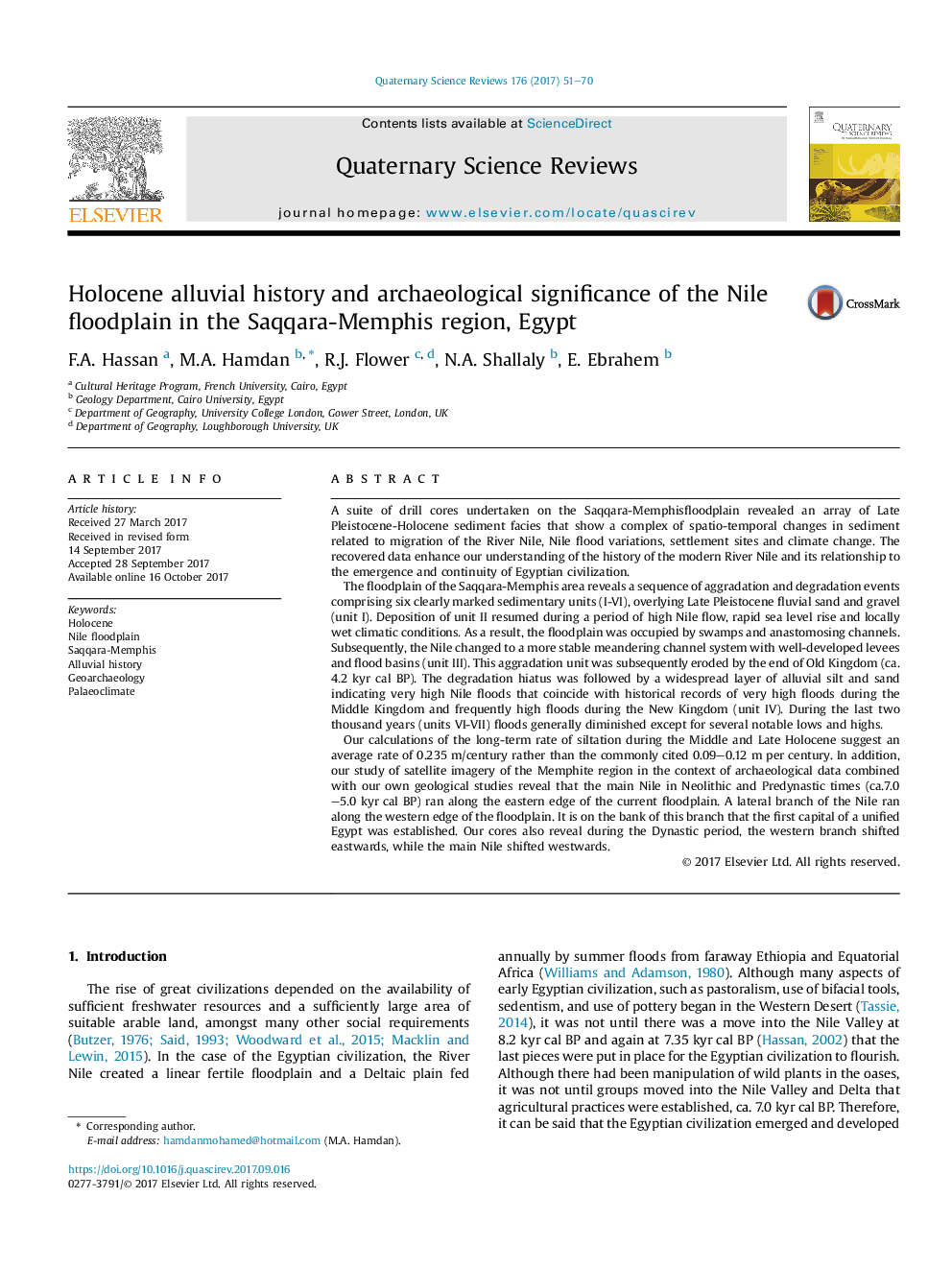| کد مقاله | کد نشریه | سال انتشار | مقاله انگلیسی | نسخه تمام متن |
|---|---|---|---|---|
| 5786496 | 1640759 | 2017 | 20 صفحه PDF | دانلود رایگان |
- The Saqqara floodplain reveals both aggradation and degradation events corresponding Nile floods and palaeoclimate of the Nile headwaters.
- The Saqqara floodplain exhibits several discontinuities in sedimentation, corresponding to major changes in global climatic events.
- The current coring sites have revealed occupations at considerable depths below the present surface, much lower than previously suspected.
- The rate of siltation in the floodplain from the Old Kingdom to Late Period is 0.172 m/century and since Late Period to the present as 0.31 m/century.
- The Nile channel shifting was measured over a period of 500 years during Old Kingdom to about 1.64 km/century to the east.
A suite of drill cores undertaken on the Saqqara-Memphisfloodplain revealed an array of Late Pleistocene-Holocene sediment facies that show a complex of spatio-temporal changes in sediment related to migration of the River Nile, Nile flood variations, settlement sites and climate change. The recovered data enhance our understanding of the history of the modern River Nile and its relationship to the emergence and continuity of Egyptian civilization.The floodplain of the Saqqara-Memphis area reveals a sequence of aggradation and degradation events comprising six clearly marked sedimentary units (I-VI), overlying Late Pleistocene fluvial sand and gravel (unit I). Deposition of unit II resumed during a period of high Nile flow, rapid sea level rise and locally wet climatic conditions. As a result, the floodplain was occupied by swamps and anastomosing channels. Subsequently, the Nile changed to a more stable meandering channel system with well-developed levees and flood basins (unit III). This aggradation unit was subsequently eroded by the end of Old Kingdom (ca. 4.2 kyr cal BP). The degradation hiatus was followed by a widespread layer of alluvial silt and sand indicating very high Nile floods that coincide with historical records of very high floods during the Middle Kingdom and frequently high floods during the New Kingdom (unit IV). During the last two thousand years (units VI-VII) floods generally diminished except for several notable lows and highs.Our calculations of the long-term rate of siltation during the Middle and Late Holocene suggest an average rate of 0.235 m/century rather than the commonly cited 0.09-0.12 m per century. In addition, our study of satellite imagery of the Memphite region in the context of archaeological data combined with our own geological studies reveal that the main Nile in Neolithic and Predynastic times (ca.7.0-5.0 kyr cal BP) ran along the eastern edge of the current floodplain. A lateral branch of the Nile ran along the western edge of the floodplain. It is on the bank of this branch that the first capital of a unified Egypt was established. Our cores also reveal during the Dynastic period, the western branch shifted eastwards, while the main Nile shifted westwards.
Journal: Quaternary Science Reviews - Volume 176, 15 November 2017, Pages 51-70
